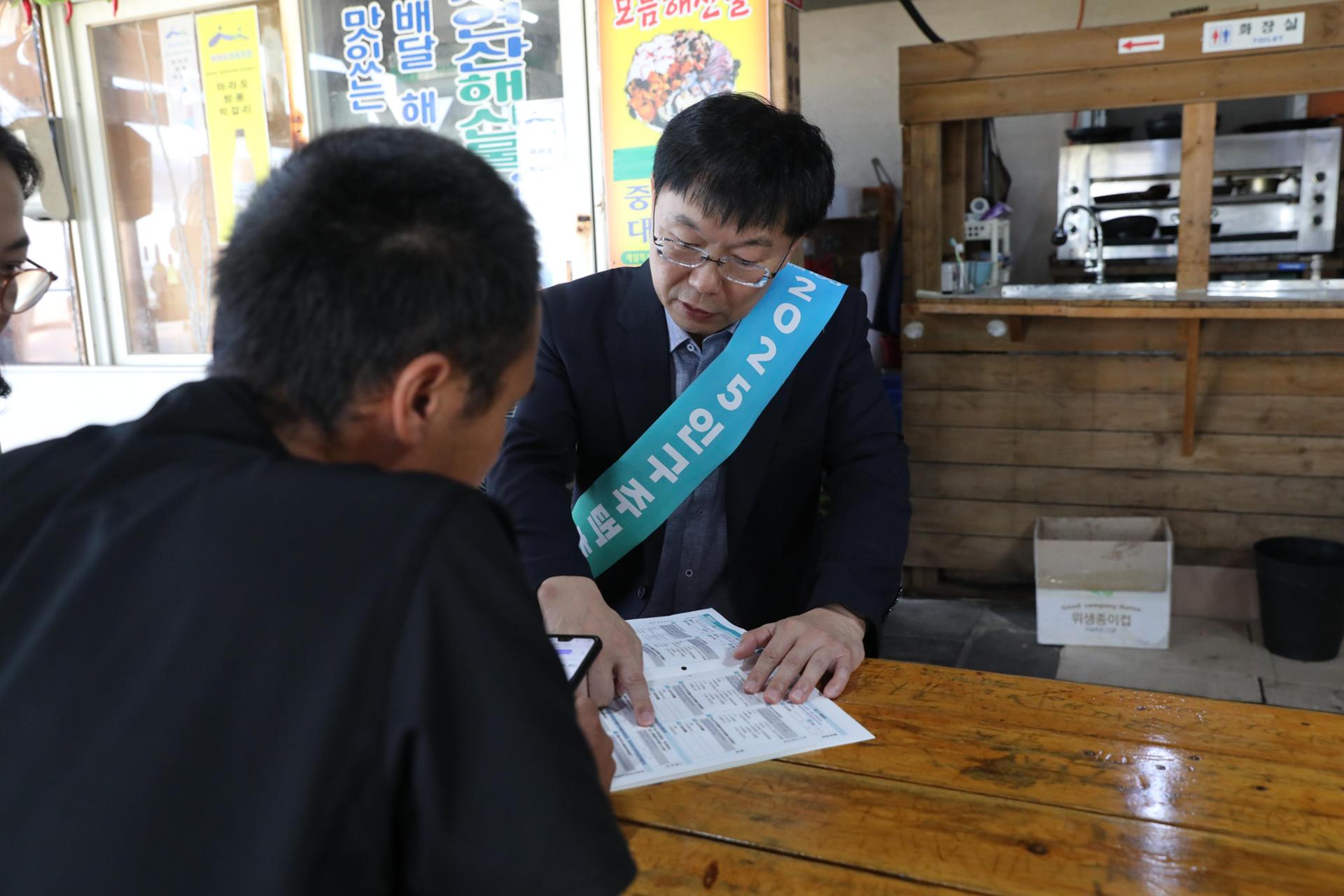As Korea celebrates the 100th anniversary of its national census, Minister of Data and Statistics Ahn Hyung-jun is urging the country’s record 2.73 million foreign residents to actively participate in the on-site survey, which runs from Nov. 1 to 18.
The minister emphasized that the 2025 Population and Housing Census aims to embrace and support foreign residents as valued members of Korea’s increasingly multicultural society, dismissing concerns that the data could be used to track undocumented individuals.
This year’s census, the largest to date, began on Oct. 22 with online and phone surveys as part of the nationwide population count conducted every five years on a sample of households.
It is designed to collect comprehensive data on all residents — both Korean citizens and foreign nationals — as well as their households, providing essential statistics for future policy development.
However, some undocumented residents have expressed concerns that the large-scale survey could be used to identify them.
“I ask every foreign resident to participate in the on-site survey when approached, as your voices are essential for shaping policies that reflect the realities of everyone living in Korea,” Ahn said in an exclusive written interview with The Korea Times.
He explained that the participation of foreign residents is particularly important because their data “directly informs programs related to a range of social and welfare services,” including education, employment, health care and housing.
“We want to ensure that foreign communities are not overlooked in these services,” he said, adding, “The more complete and accurate the information we collect, the better we can design policies that meet the needs of both Korean and foreign residents.”
To address privacy concerns, Ahn underscored that all responses are strictly protected under Article 33 of the Statistics Act and used only for statistical purposes.
“I want to assure all residents that the census does not track legal status,” he said. “No one can identify who is undocumented, so everyone can respond safely and confidently.”

Minister of Data and Statistics Ahn Hyung-jun, right, fourth from left, poses with ministry census staff and villagers during a campaign promoting the 100th anniversary of the national census on Mara Island, Oct. 24. Courtesy of Ministry of Data and Statistics
Survey available in 20 languages
The 2025 census comes as the number of foreign residents in Korea continues to grow, now making up an increasing share of the population.
The number of non-citizen residents rose from 590,000 in 2010 to 2.04 million in 2024, and recent data from the Korea Immigration Service shows a record 2.73 million in the country in the first half of 2025, representing 5.3 percent of the population.
The census also comes at a time of expanding roles and responsibilities for the Ministry of Data and Statistics, formerly Statistics Korea.
Now a higher-level agency under the Prime Minister’s Office — the first such change in 35 years — it is responsible for coordinating government-wide data governance and ensuring statistical integrity.
The census gathers a total of 55 items, including 42 obtained through direct surveys and 13 sourced from administrative records, covering 5 million randomly selected households across the country.
“Notably, seven new items have been added to better capture changing social norms and the diversity of household types,” Ahn said, referring to new questions that address issues such as languages spoken at home and Korean language proficiency.

Minister of Data and Statistics Ahn Hyung-jun, right, observes as the ministry’s census staff teaches a villager on Mara Island how to participate in the national census, Oct. 24. Courtesy of Ministry of Data and Statistics
Non-citizens living in or planning to stay in selected sample areas across the country for three months or more are included in the survey.
The census is now available in 20 languages — up from 10 in 2020 — through online, phone or in-person surveys.
The newly added languages are Bengali, Burmese, Kazakh, Kyrgyz, Lao, Malay, Sinhala, Ukrainian, Urdu and Uzbek. English, Chinese, Japanese, Bahasa Indonesia, Khmer, Mongolian, Nepali, Russian, Thai and Vietnamese were already available, having been used in the previous census.
Census staff carry multilingual IDs and use tablets with translation apps, while dedicated call center staff can assist in English, Chinese and Vietnamese.
The call center operates on weekdays from 9 a.m. to 6 p.m.
“These measures are designed to make participation as easy and safe as possible,” the minister said.
As of Oct. 28, 11.6 percent of households had responded, with mobile surveys being the most popular method. Results are expected to be published by the end of November 2026.
“The data will serve as a key resource for national policy planning, academic research and business decision-making,” Ahn said.
He noted that the “census provides statistics down to the town and village level, allowing local governments to develop community-specific programs and policies.”
The data will also be publicly accessible through the ministry-run Statistical Information Service and Microdata Integrated Service, enabling government agencies, researchers and the public to utilize the information.
Ahn noted that the census, rooted in the 1925 Simplified National Census, has been “essential for guiding the nation for the past century,” and noted its key role in modern Korean history, from the period immediately following liberation from Japanese colonial rule to economic development in the latter half of the 20th century and global recognition of Korea as a developed nation in 2021.
“As Korea has developed as a nation, its statistical capabilities have grown significantly. Today, these capabilities are recognized globally, and many countries seek to learn from our statistical methods,” Ahn said.
“This achievement is not solely the result of the ministry’s work, but something we have accomplished together with the citizens who have faithfully participated in the census over the past 100 years,” he added.















